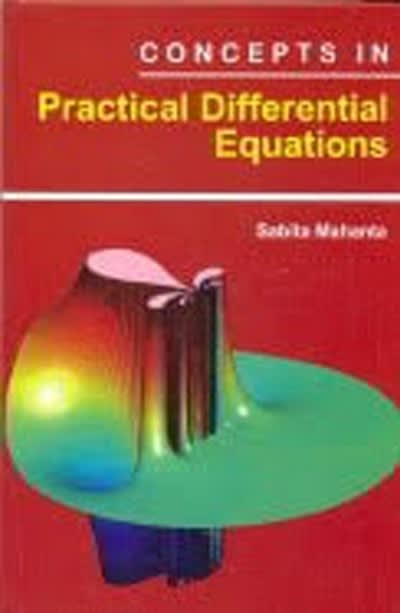1.In a certain department of a factory there are two shops. Total departmental overheads for a year are `1,20,000 and the estimated number of direct labour hour is 24,000 (10 men employed for 48 hours per week during 50 weeks in the year). From the particulars given below calculate the prime cost and works cost of a work order No. 54 which passes through both shops:
(1) Material consumed `1,000.
(2) Direct labor hours shop A -8hrs at '6.00 per hour
Shop B-5hrs 7.50 per hour
3) Works overheads are to be levied by means of a direct hour rate
2.How can consumer satisfaction be measured using perspectives of financial and non-financial measures.
3.What is just in time technique for managerial accounting.
4.How do you measure impact of managerial control on employees behavior
5.What are some alternative methods of measuring value of intangible assets
6.What impacts do managerial accounting for operation managers have in decision making and planning.
7.Discuss the need of database logical structures and their significance in effective management of database.
8.Why are retained earnings not distributed to shareholders in a public company.
9.State and explain when a company should report a balanced sheet
10.Why is volume a totally independent variable from price in the market
Lab Section Lab Partners) Gauss's Law Investigation #2: Charge Distributions on Conductors Introduction In Investigation #1, you discovered that the flux thru a closed surface (i.c., a Gaussian surface) is proportional to the charged enclosed by that surface: Flux thru Gaussian Surface & Charge enclosed by surface This relationship is known as Gauss's Law. In this investigation, you will use Gauss's Law to determine where charge is located on conducting objects of various shapes. Question 1 What is the electric field inside of the conducting material of any conductor? Question 2 Based on your answer to question 1, how many electric field lines are located inside of the conducting material of any conductor? The diagram at right shows a solid metal ball that bears an excess positive charge. When you studied electrostatics, you may have used reasoning about how charges attract and repel one another to determine where these charges lie on the metal ball. For now, however, it is important that you put this knowledge aside. The ultimate goal of this investigation is to help you learn how to apply Gauss's Law. Determining the locations of the excess charges on a conductor is just a bonus. Inside of the ball is a closed dotted path that represents a Gaussian surface. Remember that a Gaussian surface is a mathematical construct, not a real, physical object. Notice that the Gaussian surface is contained completely within the metallic material of the metal ball. Recall that the electric flux thru a closed surface is related to the number of field lines that pass thru that surface. Flux is positive if the field lines pass from inside to outside and is negative if the field lines pass from outside to inside. Question 3 What is the value of the electric flux thru the Gaussian surface shown in the diagram? Explain your reasoning.flux of a uniform electric field tillou (a) E = 4i N/C and (b) E = 4k N/C? 2 Figure 23-20 shows, in cross section, three solid cylinders, each of length L and uniform charge Q. Concentric with each cylinder is a cylindrical Gaussian surface, with all three surfaces having the same radius. Rank the Gaussian surfaces according to the electric field at any point on the surface, greatest first. Cylinder Gaussian OO surface (a) (b) (c) mooPal Fig. 23-20 Question 2. 5x5 16 wadmun off Figure 23-21 shows, in cross sec- 3R tion, a central metal ball, two spherishell cal metal shells, and three spherical Gaussian surfaces of radii R, 2R, and 3R, all with the same center. The uni- form charges on the three objects R are: ball, Q; smaller shell, 30; larger shell, 50. Rank the Gaussian sur- Gaussian faces according to the magnitude of 2R surface the electric field at any point on the surface, greatest first. Fig. 23-21 Question 3. 4 Figure 23-22 shows, in cross sec- tion, two Gaussian spheres and two Gaussian cubes that are centered on1. A bivariate normal random vector (X1, X2)' is defined by X1 = M1 + 01 2 (1) X2 = 12 + 02 2 1 - PU2) where U1 and U2 are independent and standard normal random variables, of and 02 are positive numbers, #1 and /2 are real numbers, and -1









